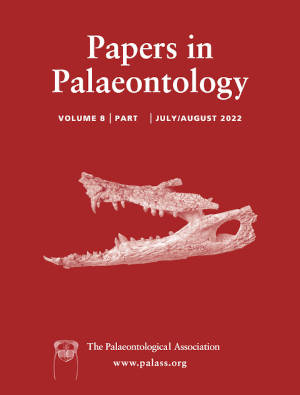Article: Early adaptations of true flies (Diptera) to moist and aquatic continental environments
Publication: Papers in Palaeontology
Volume:
8
Part:
6
Publication Date:
2022
Article number:
e1472
Author(s):
Enrique Peñalver, Rafel Matamales-Andreu, André Nel, and Ricardo Pérez-de la Fuente
DOI:
10.1002/spp2.1472
Abstract
Abstract Insect colonization of continental aquatic ecosystems and their immediate surroundings was paramount for the establishment of complex trophic nets and organic-matter recycling in those environments. True flies and other insects such as mayflies developed crucial ecological roles in early continental aquatic ecosystems, as early as the Triassic. However, the mode and tempo of these processes remain poorly known, partly due to a critical fossil record gap before the Middle Triassic. Here we study the dipterans from the early Middle Triassic Konservat-Lagerstätte of Pedra Alta (Aegean, early Anisian, Spain), which yields the oldest records of the order. Protoanisolarva juarezi gen. et sp. nov., based on an exceptionally preserved larva, shares key features with the extant nematoceran family Anisopodidae. Developing in inferred moist terrestrial environments contiguous with pools inhabited by aquatic organisms, it represents the only known Triassic dipteran larva with terrestrial affinities indicating that the amphipneustic respiratory system of insect larvae extends back to c. 247 Ma. Two nematoceran aquatic pupae are also described: one classified as Voltziapupa cf. cornuta, and the other as an indeterminate taxon. Finally, an egg cluster belonging to the ootaxon Clavapartus latus is likely to have been produced by chironomids. These eggs were included in a mucilaginous matrix, a probable adaptation against predation and/or changing conditions, including desiccation. These new findings provide key data on the early evolutionary history of the mega-diverse order Diptera, the ecology of their ancestral pre-adult forms, and the functioning of early Middle Triassic continental aquatic ecosystems.
